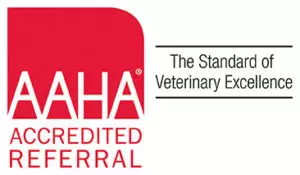Canine Histiocytic Sarcoma
Canine histiocytic proliferative disorders include a wide spectrum of diseases characterized by different biologic behaviors. The causes for development of these diseases are largely unknown but suspected to be due to genetic abnormalities. Two of the more common forms we encounter are a benign and a malignant form. Both tend to occur in similar breeds including, Rottweilers, Bernese Mountain Dogs, and retrievers. The malignant form can be further subdivided into a localized histiocytic sarcomas arising from a single site (lymph node, skin, spleen, liver, lung, etc), and a disseminated form that involves many tissues such as lymph node, spleen, lung, brain, nasal cavity, and bone marrow. The localized form may disseminate (or metastasize).
Dogs may present with a variety of clinical signs depending upon whether the tumor is localized or disseminated. In the disseminated form, dogs are often clinically ill as a result of the cancer. They often present with low red blood cells, white blood cells and platelets as a result of the cancer infiltrating the bone marrow. Diagnosis is based upon aspiration or biopsy of the affected tissue. Therapy will depend in part on the animal’s clinical presentation as they may need supportive care in the form of a blood or plasma transfusion and the form of histiocytic sarcoma encountered. The localized form can be treated with surgery depending upon the site and followed up with chemotherapy (CCNU, Cytoxan, Adriamycin) and radiation if needed. The prognosis for the localized can be good depending upon the site. The disseminated form is treated with chemotherapy and carries a poor prognosis.
More recently, a chemotherapy drug called CCNU has been shown to have efficacy against this cancer and approximately 50-60% of dogs will respond to treatment. The most recent data found that the dogs that responded to treatment and had good prognostic factors had good cancer control for some time. Prognostic factors included: low albumin – a blood protein (poor), low platelets (poor), and spleen involvement (poor). CCNU is an oral chemotherapy agent that is given once every three weeks. With this drug, bloodwork (CBC) is drawn prior to chemotherapy and one week after. This drug may affect the white blood cells so the bloodwork one week after therapy is essential. If given many times this drug may affect the liver so blood chemistry values are monitored to ensure no liver damage occurs.
With effective therapy using chemo alone, 50% of dogs survive beyond 4 months. With effective chemotherapy and surgery, 50% of dogs survive beyond 1 year.


